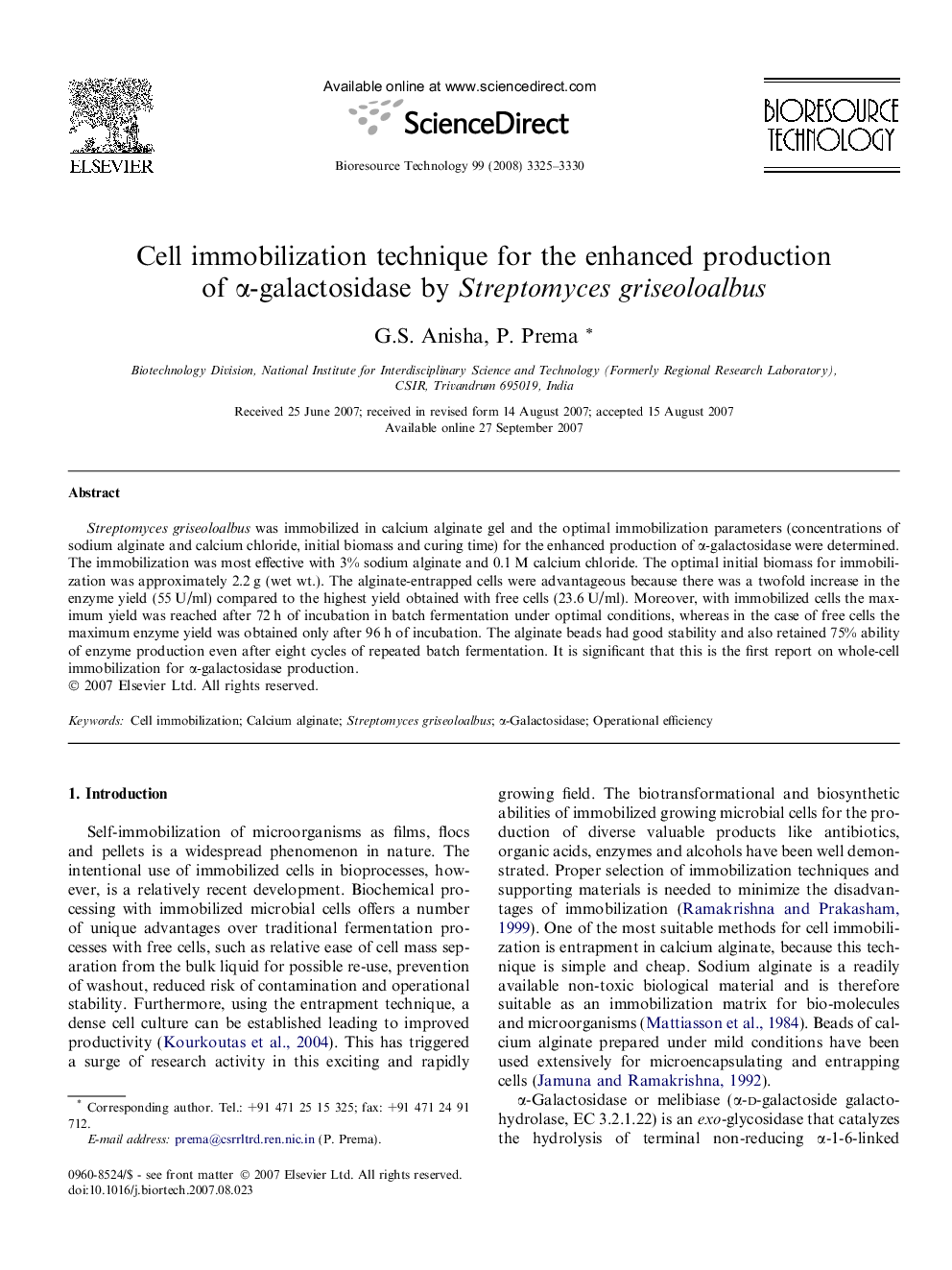| Article ID | Journal | Published Year | Pages | File Type |
|---|---|---|---|---|
| 686313 | Bioresource Technology | 2008 | 6 Pages |
Streptomyces griseoloalbus was immobilized in calcium alginate gel and the optimal immobilization parameters (concentrations of sodium alginate and calcium chloride, initial biomass and curing time) for the enhanced production of α-galactosidase were determined. The immobilization was most effective with 3% sodium alginate and 0.1 M calcium chloride. The optimal initial biomass for immobilization was approximately 2.2 g (wet wt.). The alginate-entrapped cells were advantageous because there was a twofold increase in the enzyme yield (55 U/ml) compared to the highest yield obtained with free cells (23.6 U/ml). Moreover, with immobilized cells the maximum yield was reached after 72 h of incubation in batch fermentation under optimal conditions, whereas in the case of free cells the maximum enzyme yield was obtained only after 96 h of incubation. The alginate beads had good stability and also retained 75% ability of enzyme production even after eight cycles of repeated batch fermentation. It is significant that this is the first report on whole-cell immobilization for α-galactosidase production.
